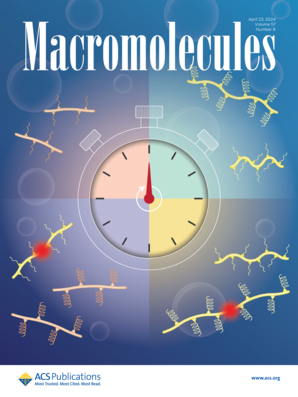High Heat Resistance, Barrier Property, and Low Carbon Emission PET for Sustainable Food Packaging Applications Based on Biobased Functional Monomers
IF 5.1
1区 化学
Q1 POLYMER SCIENCE
引用次数: 0
Abstract
PET has a wide range of applications in human life. To address the issues including low glass transition temperature, inadequate oxygen barrier properties, and slight brittleness that limit certain applications of PET, 1,4-cyclohexanedimethanol (CHDM) and isosorbide (IS) were incorporated into the PET main chains using a one-pot two-step method, resulting in the formation of PETGI copolymers. Dynamic mechanical and melt rheological properties revealed that the V-shaped fused ring structure of isosorbide hinders the free movement of the polymer chains, which significantly enhanced the heat resistance of the PETGI copolymers. The glass transition temperature of the PETGI copolymers ranges from 80 to 106 °C. Furthermore, CHDM and IS facilitate the amorphous structure of PETGI, yielding a transparency of 98% and superior toughness, with an elongation at break of 234%. The incorporation of isosorbide markedly increases the molecular chain rigidity of the copolymer while reducing the free volume of the polymer. Time-temperature superposition (TTS) provided insight into the structural influence of different monomers in the molecular chain on the fractional free volume (fg). As a result of these combined factors, the oxygen barrier performance of the PETGI copolymer containing 40% mol of isosorbide was improved by 41% compared to standard PET. The results of sustainability assessment showed that the equivalent PETGIE6C0I4 reduces carbon dioxide emissions by nearly 15.4% compared to PET.基于生物基功能单体的高耐热性、阻隔性和低碳排放PET可持续食品包装应用
PET在人类生活中有着广泛的应用。为了解决玻璃化转变温度低、阻氧性能不足以及易碎等限制PET应用的问题,采用一锅两步法将1,4-环己二甲醇(CHDM)和异山杉酯(IS)掺入PET主链中,从而形成PETGI共聚物。动态力学和熔体流变学性能表明,异山梨酯的v形熔结环结构阻碍了聚合物链的自由运动,显著提高了PETGI共聚物的耐热性。PETGI共聚物的玻璃化转变温度范围为80 ~ 106℃。此外,CHDM和IS有利于PETGI的非晶结构,产生98%的透明度和优异的韧性,断裂伸长率为234%。异山梨酯的掺入显著增加了共聚物的分子链刚性,同时减少了聚合物的自由体积。时间-温度叠加(TTS)研究了分子链中不同单体对分数自由体积(fg)的结构影响。在这些因素的综合作用下,含40% mol异山梨酯的PETGI共聚物的阻氧性能比标准PET提高了41%。可持续性评估结果表明,与PET相比,等效PETGIE6C0I4可减少近15.4%的二氧化碳排放量。
本文章由计算机程序翻译,如有差异,请以英文原文为准。
求助全文
约1分钟内获得全文
求助全文
来源期刊

Macromolecules
工程技术-高分子科学
CiteScore
9.30
自引率
16.40%
发文量
942
审稿时长
2 months
期刊介绍:
Macromolecules publishes original, fundamental, and impactful research on all aspects of polymer science. Topics of interest include synthesis (e.g., controlled polymerizations, polymerization catalysis, post polymerization modification, new monomer structures and polymer architectures, and polymerization mechanisms/kinetics analysis); phase behavior, thermodynamics, dynamic, and ordering/disordering phenomena (e.g., self-assembly, gelation, crystallization, solution/melt/solid-state characteristics); structure and properties (e.g., mechanical and rheological properties, surface/interfacial characteristics, electronic and transport properties); new state of the art characterization (e.g., spectroscopy, scattering, microscopy, rheology), simulation (e.g., Monte Carlo, molecular dynamics, multi-scale/coarse-grained modeling), and theoretical methods. Renewable/sustainable polymers, polymer networks, responsive polymers, electro-, magneto- and opto-active macromolecules, inorganic polymers, charge-transporting polymers (ion-containing, semiconducting, and conducting), nanostructured polymers, and polymer composites are also of interest. Typical papers published in Macromolecules showcase important and innovative concepts, experimental methods/observations, and theoretical/computational approaches that demonstrate a fundamental advance in the understanding of polymers.
 求助内容:
求助内容: 应助结果提醒方式:
应助结果提醒方式:


